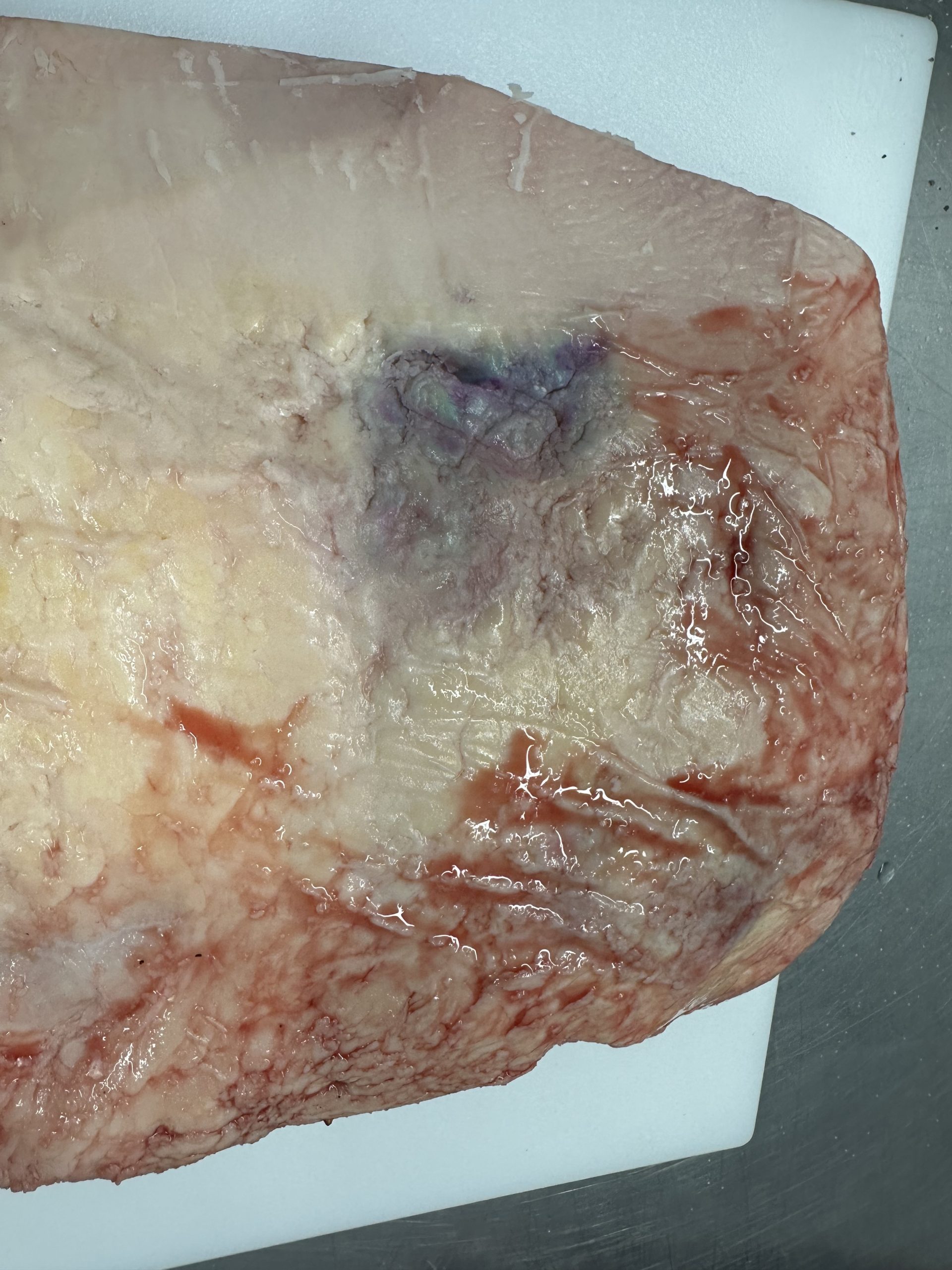What is that blue stuff on my meat?
A common question from consumers is often related to identifying a blue or purple color on their product surface. When purchasing boxed meat, and especially beef, it is not uncommon to find blue smudges on the fat surface. This blue color is most likely a food grade ink that was applied to the exterior of the carcass during inspection or grading and is not a bruise or other product defect.

The United States Department of Agriculture (USDA) utilizes ink made from natural coloring agents that have been recognized by the Food and Drug Administration as safe for use in food. The color of the ink used is also predetermined by these regulatory agencies. Meat from cattle, pigs, sheep, and goats and most poultry is marked with purple or blue ink for inspection and grading, but these species may also have red ink to denote live animal or carcass characteristics. Green ink is not allowed for applying official marks to carcasses as green is reserved for equines. No other ink colors are used to mark edible product from whole carcasses or smaller cuts.
Processors are responsible for supplying the ink for USDA inspection and grading services. There are several companies that sell USDA “approved” ink in bulk. For smaller local and regional processors, ink should be available on an ink pad for easier handling and to reduce waste. Further processors who buy inspected products in the form of boxed meat will generally not need to stamp any products because any necessary inspection marks will be included on the packaging label.
As a processor, food service provider, or consumer, what should you do with the marked product? Inspection and grading marks must be maintained if the carcass or cut is shipped without other labels. At a processing or retail level, ink can simply be removed by trimming the area during processing without any regulatory concerns. Removing ink marks is a good idea to prevent customer concerns.
In summary, any ink applied during inspection or grading of meat is safe for food use, but occasionally causes concerns among downstream users if not removed during processing.
Dr. Rob Maddock, Ph.D.
Technical Resource Officer, AMSA
